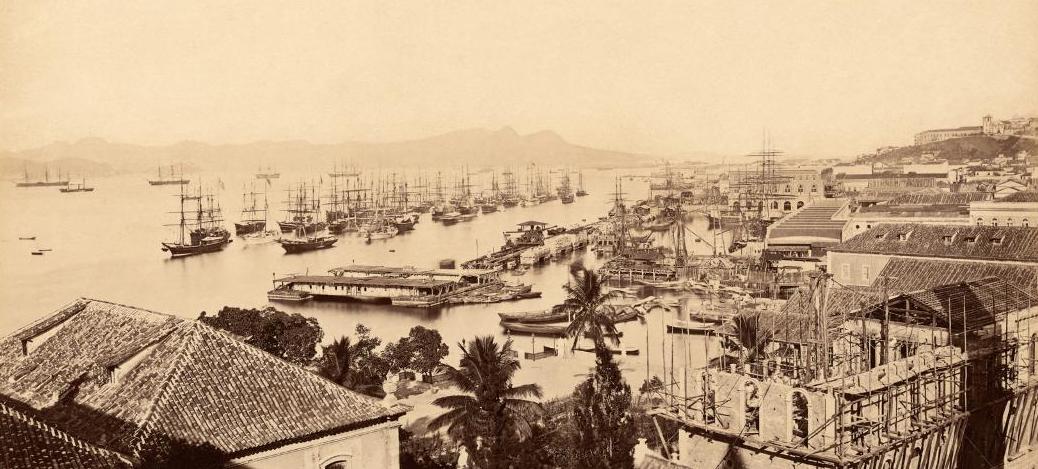The Second Formation of Islamic Law
with Guy Burak
hosted by Chris Gratien and Nir Shafir
Download the episode
Within the historiography, major shifts and developments in schools of thought and legal interpretation have dominated the narrative of how Islamic law has spread and transformed across time. However, as our guest Guy Burak argues in his new monograph, The Second Formation of Islamic Law, structural changes in the relationship between state, society, and law are also an important part of this story. In this episode, Dr. Burak explains how law transformed under post-Mongol Islamicate empires such as the Ottomans through changes in the ways these states claimed legal authority.
Stream via Soundcloud
Guy Burak is the Middle Eastern and Islamic Studies Librarian at NYU's Elmer Holmes Bobst Library. He is the author of The Second Formation of Islamic Law: The Hanafi School in the Early Modern Ottoman Empire (Cambridge University Press, 2015). (see academia.edu)
Episode No. 199
Release date: 4 September 2015
Location: RCAC, Istanbul
Editing and production by Chris Gratien
Bibliography courtesy of Guy Burak
Music excerpts via archive.org and Free Music Archive: Murat Kenarinda (Egin Havasi) - Agyazar Efendi; Karaköy Balık Pazarı (Chris Gratien); Muzaffer Akgun - Ha Bu Diyar; Podington Bear
SELECT BIBLIOGRAPHY
Guy Burak, The Second Formation of Islamic Law: The Hanafi School in the Early Modern Ottoman Empire (New York: Cambridge University Press, 2015).
Richard C. Repp, The Müfti of Istanbul: A Study in the Development of the Ottoman Learned Hierarchy (London: Ithaca Press, 1986).
Abdurrahman Atcil, “The Formation of the Ottoman Learned Class and Legal Scholarship (1300–1600)” (PhD diss., University of Chicago, 2010).
Colin Imber, Ebuʾs-Suʿud: The Islamic Legal Tradition (Stanford, CA : Stanford University Press , 1997 ) ;
Rudolph Peters, “What Does It Mean to Be an Official Madhhab? Hanafism and the
Ottoman Empire,” in The Islamic School of Law: Evolution, Devolution, and Progress, ed. Peri Baerman , Rudolph Peters , and Frank E. Vogel (Cambridge, MA: Islamic Legal Studies Program, Harvard Law School, distributed by Harvard University Press, 2005), 147–58
Snjezana Buzov, “The Lawgiver and His Lawmakers: The Role of Legal Discourse in the Change of Ottoman Imperial Culture” (PhD diss., University of Chicago, 2005);
Haim Gerber, State, Society, and Law in Islam: Ottoman Law in Comparative Perspective ( Albany : State University of New York , 1994 ) .
Martha Mundy and Richard Saumarez-Smith, Governing Property, Making the Modern State: Law, Administration, and Production in Ottoman Syria (London: I. B. Tauris, 2007), esp. chs. 2-3.
Judith E. Tucker, In the House of the Law: Gender and Islamic Law in Ottoman Syria and Palestine (Berkeley: University of California Press, 1998).
Guy Burak is the Middle Eastern and Islamic Studies Librarian at NYU's Elmer Holmes Bobst Library. He is the author of The Second Formation of Islamic Law: The Hanafi School in the Early Modern Ottoman Empire (Cambridge University Press, 2015). (see academia.edu)
Chris Gratien is a graduate of the doctoral program at Georgetown University's Department of History. His research focuses on the social and environmental history of the Ottoman Empire and the modern Middle East. (see academia.edu)
Nir Shafir is a doctoral candidate at UCLA focusing on the history of knowledge and science in the early modern Middle East. He also runs the website HAZİNE, which profiles different archives, libraries, and museums that house sources on the Islamic world. (see academia.edu)
Nir Shafir is a doctoral candidate at UCLA focusing on the history of knowledge and science in the early modern Middle East. He also runs the website HAZİNE, which profiles different archives, libraries, and museums that house sources on the Islamic world. (see academia.edu)
Episode No. 199
Release date: 4 September 2015
Location: RCAC, Istanbul
Editing and production by Chris Gratien
Bibliography courtesy of Guy Burak
Music excerpts via archive.org and Free Music Archive: Murat Kenarinda (Egin Havasi) - Agyazar Efendi; Karaköy Balık Pazarı (Chris Gratien); Muzaffer Akgun - Ha Bu Diyar; Podington Bear
SELECT BIBLIOGRAPHY
Guy Burak, The Second Formation of Islamic Law: The Hanafi School in the Early Modern Ottoman Empire (New York: Cambridge University Press, 2015).
Richard C. Repp, The Müfti of Istanbul: A Study in the Development of the Ottoman Learned Hierarchy (London: Ithaca Press, 1986).
Abdurrahman Atcil, “The Formation of the Ottoman Learned Class and Legal Scholarship (1300–1600)” (PhD diss., University of Chicago, 2010).
Colin Imber, Ebuʾs-Suʿud: The Islamic Legal Tradition (Stanford, CA : Stanford University Press , 1997 ) ;
Rudolph Peters, “What Does It Mean to Be an Official Madhhab? Hanafism and the
Ottoman Empire,” in The Islamic School of Law: Evolution, Devolution, and Progress, ed. Peri Baerman , Rudolph Peters , and Frank E. Vogel (Cambridge, MA: Islamic Legal Studies Program, Harvard Law School, distributed by Harvard University Press, 2005), 147–58
Snjezana Buzov, “The Lawgiver and His Lawmakers: The Role of Legal Discourse in the Change of Ottoman Imperial Culture” (PhD diss., University of Chicago, 2005);
Haim Gerber, State, Society, and Law in Islam: Ottoman Law in Comparative Perspective ( Albany : State University of New York , 1994 ) .
Martha Mundy and Richard Saumarez-Smith, Governing Property, Making the Modern State: Law, Administration, and Production in Ottoman Syria (London: I. B. Tauris, 2007), esp. chs. 2-3.
Judith E. Tucker, In the House of the Law: Gender and Islamic Law in Ottoman Syria and Palestine (Berkeley: University of California Press, 1998).










Comments
Post a Comment
Due to an overwhelming amount of spam, we no longer read comments submitted to the blog.